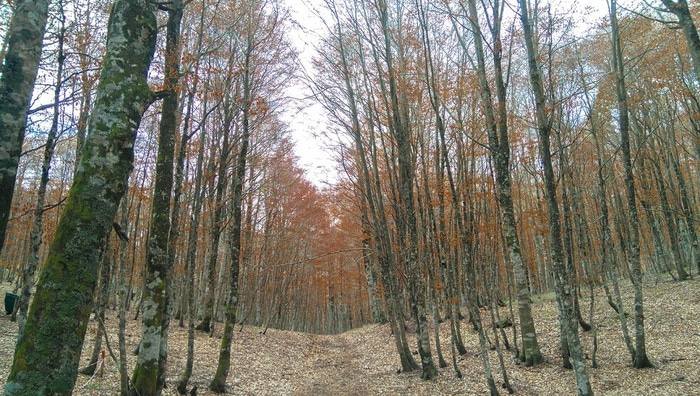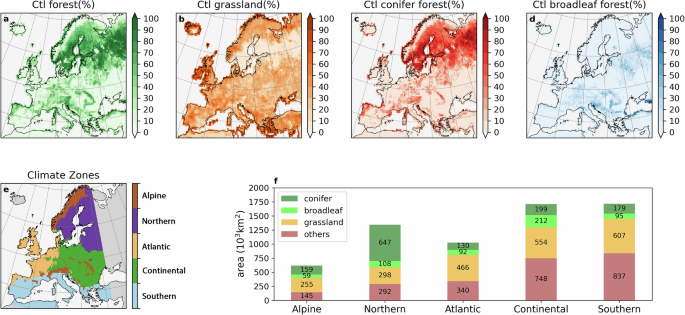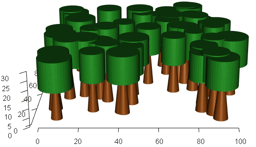Rethinking Europe’s Forests: Why Tree Species Matter for Climate Cooling
Published in Earth & Environment

When we think about forests as allies in the fight against climate change, the first image that often comes to mind is carbon: trees capturing CO₂ from the atmosphere and storing it in their leaves, branches, stems, roots, and soils. Forests cover about 40% of the European Union’s land area, and their contribution to Europe’s net-zero goals is usually framed in terms of this “carbon sink” function. But forests are more than carbon machines. They also shape the local and regional climate through their physical properties, how they reflect sunlight, how they store and release heat, and how they drive evaporation. These are what scientists call biogeophysical effects.
And here’s the surprising twist: in Europe, adding more forest does not always mean cooling the climate. In fact, afforestation in many regions has been shown to warm local climates rather than cool them. This happens because forests, especially dark-canopied conifers, absorb more solar energy than the crops or grasslands they replace. That darker surface heats up, and in northern latitudes where water availability limits evaporation, much of that extra heat stays in the system as sensible heat. The result: warmer land surfaces and, in many cases, hotter summer extremes.
This creates a real dilemma. Forest expansion is a cornerstone of EU climate policy, yet its effectiveness is challenged by these warming side-effects. The question becomes: can we rethink how and where we forest, to maximize benefits and minimize drawbacks?
A recent study led by Yao and colleagues published in Nature Communications dives directly into this problem and provides an intriguing answer: the species of trees we plant (or keep) matters just as much as the area we forest.
The Power of Species Choice
Most of Europe’s forestry expansion over the past three centuries has been dominated by economic logic. Conifers like Scots pine and Norway spruce grow quickly and provide valuable timber, so they have been widely favored, especially across Central and Northern Europe. The result has been a landscape where conifers dominate areas that might naturally have supported more broadleaved forests.
This history, however, has climatic consequences. Coniferous forests, with their dark green needles and relatively low reflectivity (or albedo), absorb more solar radiation than broadleaved forests. By contrast, broadleaved species such as oak or beech have lighter canopies and reflect more sunlight back into the atmosphere. Moreover, broadleaved forests tend to transpire more water during the warm season, which translates into stronger evaporative cooling.
Yao and colleagues tested this systematically using a regional climate model (COSMO-CLM2). They simulated Europe’s climate between 2015 and 2059 under different forest change scenarios, including (a) standard afforestation with today’s species composition and (b) converting large areas of conifers into broadleaved species. The model was run under a high-warming scenario (SSP3-7.0), which makes the results particularly relevant for a future where climate action remains limited.
The outcome is clear: species conversion makes a huge difference. While afforestation with current forest compositions often increased warming during hot summers, shifting from conifers to broadleaves reversed that effect. Over Continental Europe, the monthly mean daily maximum temperature in July could be reduced by 0.6 °C through species conversion alone. When combined with afforestation, the conversion prevented undesired warming and even flipped a projected +0.3 °C warming into a –0.7 °C cooling.
Why This Matters for Climate Policy
These numbers may seem modest at first glance, but in the context of heat extremes, a fraction of a degree is enormously important. During prolonged summer heatwaves, small changes in average maximum temperatures can translate into significant differences in mortality, crop stress, and energy demand for cooling.
The study also points to a crucial lesson for policymakers: forestation is not a one-size-fits-all solution. Simply planting trees is not enough; what trees we plant, and where, makes a decisive difference.
The researchers suggest prioritizing forestation in Northern and Central Europe, where the cooling potential of broadleaved species is strongest. By contrast, expanding forests in Western and Southern Europe risks enhancing local warming unless species composition is carefully chosen.
This is not just an ecological consideration but also a deeply political one. Current EU strategies often set targets in terms of hectares forested or numbers of trees planted, the much-publicized “three billion trees” initiative, for instance. But if those trees are mostly conifers in regions where they trap more heat than they dissipate, the policy could backfire. The implication is that Europe’s forest strategy must become more nuanced, shifting from quantity-based goals to quality- and composition-based goals.
Bridging Biogeochemical and Biogeophysical Thinking
Traditionally, forest policy and climate assessments have been dominated by the biogeochemical (BGC) perspective, the carbon sink. And indeed, this remains critical: forests absorb roughly 10% of Europe’s annual greenhouse gas emissions. But the biogeophysical (BGP) side of the equation is equally important, especially at regional scales where people experience climate directly.
The interplay of BGC and BGP effects is what makes forest policy so complex. For example, afforestation in boreal regions may store vast amounts of carbon but simultaneously darken the land surface, leading to local warming that partly offsets the carbon benefit. By contrast, broadleaf conversion in Central Europe may both enhance local cooling and maintain a solid carbon sink.
This dual perspective is essential if forests are to be reliable allies in Europe’s climate strategy. Ignoring BGP effects risks overestimating the benefits of afforestation and missing opportunities to design smarter interventions.
Challenges and Next Steps
Of course, shifting Europe’s forest composition is easier said than done. Conifer plantations dominate for economic reasons, and moving toward more broadleaved forests would require long-term planning, new silvicultural practices, and adjustments in the timber market. Species selection also has to be aligned with ecological suitability: planting broadleaves where they cannot thrive would bring neither climate nor biodiversity benefits.
Still, the study highlights a vast untapped potential. Unlike deforestation, which removes carbon sinks, species conversion offers a pathway to maintain or even enhance carbon storage while simultaneously delivering cooling benefits. It is, in essence, a way to get the best of both BGC and BGP impacts.
Another challenge lies in governance. Forests are managed at the intersection of EU-level policy, national strategies, and local landowner decisions. Aligning these layers to prioritize species conversion will require both incentives and regulations. Yet the potential co-benefits, improved resilience, biodiversity gains, reduced pest vulnerability, and greater climate compatibility, make a strong case for action.
A Call for Smarter Forest Futures
In a warming Europe, where heat extremes are becoming more frequent and intense, the cooling power of forests could play a life-saving role. But not all forests are equal in this respect. The message from Yao and colleagues is straightforward yet powerful: Europe needs to look beyond how many trees it plants and pay close attention to which trees it plants.
This means rebalancing a centuries-old bias toward conifers, embracing more broadleaved forests in Central and Northern Europe, and being cautious with afforestation in regions where it risks adding to the heat. It also means embedding biogeophysical science into the heart of EU forest policy, alongside carbon accounting.
As the EU charts its path to net zero by 2050, forests will remain a cornerstone of its strategy. But to truly harness their climate potential, policymakers must adopt a smarter, more holistic approach, one that sees forests not just as carbon vaults, but as dynamic climate shapers.
In the end, the study reminds us that forests are not passive backdrops in the climate drama. They are active players, capable of amplifying or alleviating warming, depending on how we manage them. And in this delicate balance, the species of trees we choose to nurture may be just as important as the number of trees we plant.
Follow the Topic
-
Nature Communications

An open access, multidisciplinary journal dedicated to publishing high-quality research in all areas of the biological, health, physical, chemical and Earth sciences.
Related Collections
With Collections, you can get published faster and increase your visibility.
Women's Health
Publishing Model: Hybrid
Deadline: Ongoing
Advances in neurodegenerative diseases
Publishing Model: Hybrid
Deadline: Dec 24, 2025






Please sign in or register for FREE
If you are a registered user on Research Communities by Springer Nature, please sign in